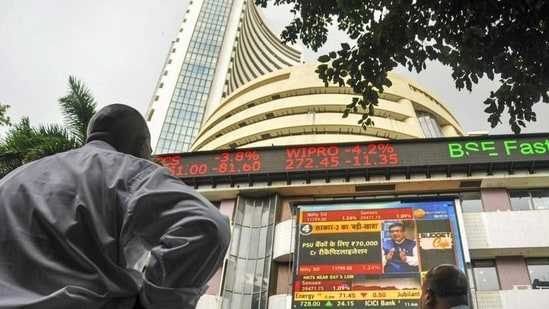The Bombay Stock Exchange benchmark Sensex tanked by 670 points on Monday, ending the two-day winning streak. The NSE index Nifty declined by 197.80 points.
The 30-share Sensex dropped by a massuve 670.93 points to end the day at 71,355. On the other hand, Nifty closed at 21,153. On Friday, the Sensex had jumped 178.58 points to close at 72,026.15. The Nifty had climbed 52.20 points or 0.24 per cent to 21,710.80

On the Sensex, the top laggards included Nestle, ITC, Tech Mahindra, State Bank of India, Mahindra and Mahindra, TCS and Hindutan Unilever.
HCL Technologies, Power Grid, Sun Pharma, NTPC, Bajaj Finance and Titan were the gainers amid the Sensex crash.
Here are five main reasons why the Sensex crashed by nearly 700 crashed on Monday:
US rate cut hopes diminishing
The hopes of an early rate cut by the US Federal Reserve are diminishing after the recent data revealed that the labour scars from the Covid-19 pandemic had effectively healed. At least 2.16 lakh jobs were added to the US payrolls last December with a wage growth of 4.1 per cent.
“The market witnessed widespread selling as the euphoria over early rate cuts may diminish due to the better-than-expected non-farm payroll data from the US and the consequent rise in the US 10-year yield. In the near term, investors’ trade positions will be more inclined towards the upcoming result season,” Vinod Nair, head of research at Geojit Financial Services, told news agency PTI.
Q3 earnings
The domestic market is cautious ahead of major IT giants revealing their Q3 results. Tata Consultancy Services and Infosys will announce the Q3 report card on January 11.
“In the near term, investors’ trade positions will be more inclined towards the upcoming result season. While the outset may be tempered by lower expectations in the IT sector, the overall forecast for earnings growth remains optimistic, projecting double-digit figures,” Nair added.
Global markets
The 670-point crash at Sensex can be attributed to the performance by Asian markets. In Asian markets, Seoul, Shanghai and Hong Kong settled lower. Japan’s Nikkei was closed for a holiday. The European markets were trading lower. The US markets ended marginally up on Friday.
Technical factors
Another important factor behind the markets ending in red could be technical factors. Kunal Shah, senior technical and derivative analyst at LKP Securities, told Mint that Nifty ended its day close to its support at 21,500 and the short-term 14-day moving average.
He added that the performance indicated a change in market sentiment. In case 21,500 mark is breached in closing, the NSE index may move towards the next support level at 21,200.
Geopolitical tensions
The geopolitical tensions including the attacks on commercial ships by Houthi rebels in the Red sea and the Israel-Gaza conflict are being keenly watched by the investors. The Red Sea is the entry point for the ships that use Suez Canal and is crucial for the movement of goods between Asia and E
Investors are closely watching geopolitical events. Houthi rebels are targeting commercial ships in the Red Sea amid the escalating Israel-Hamas conflict.
The Red Sea is the entry point for ships using the Suez Canal and is important for the movement of goods between Asia and Europe.